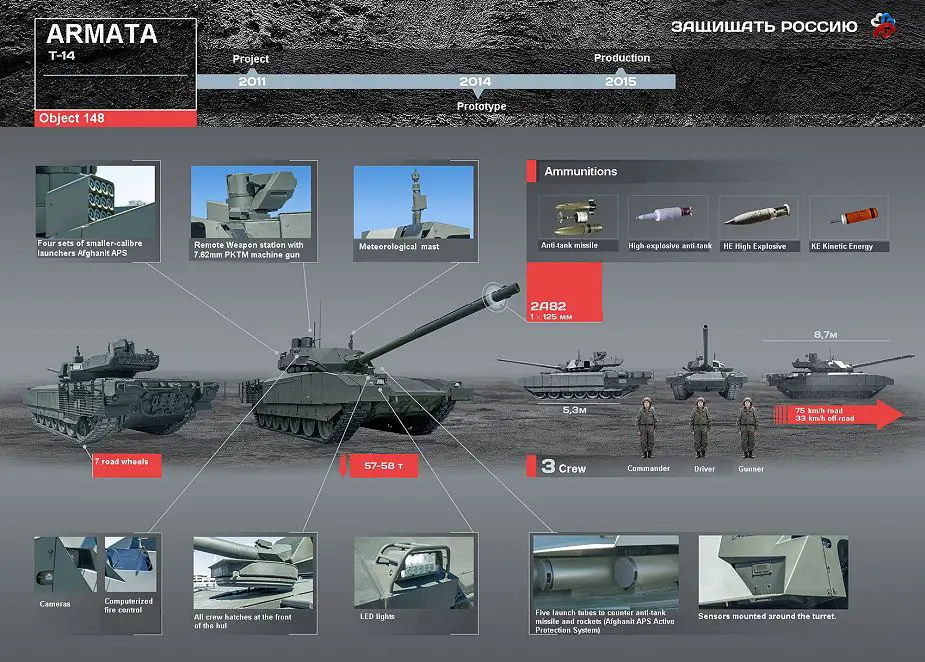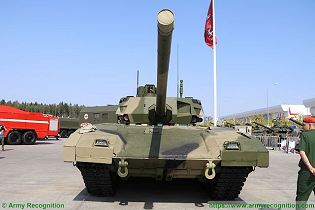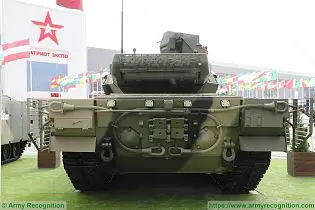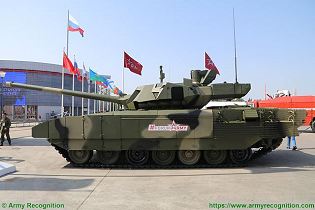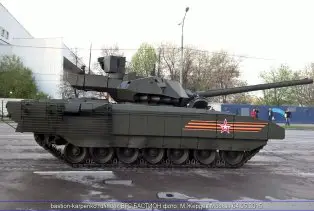Main Battle Tank Russia
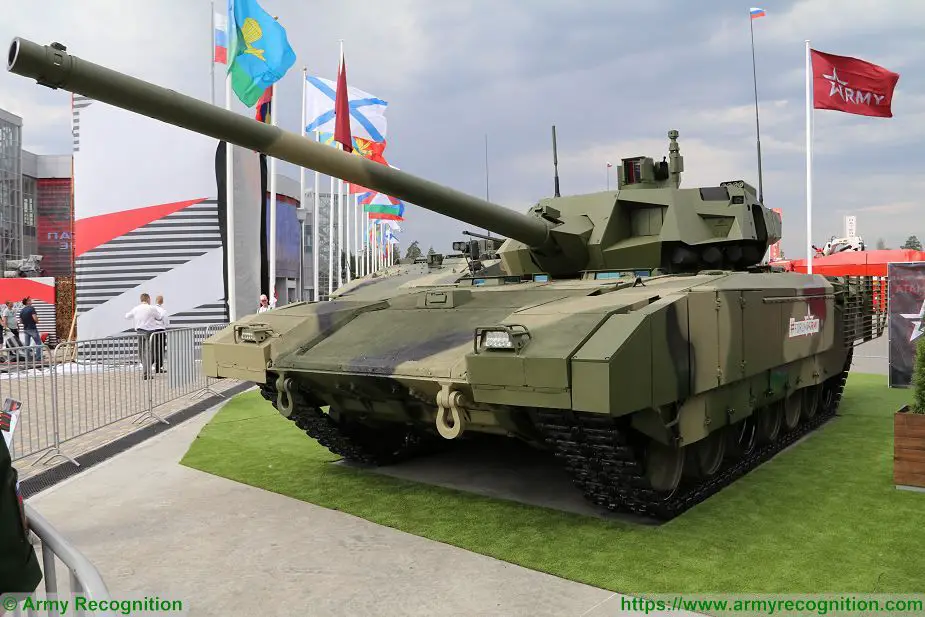
Description
In 2013, the Russian Company Uralvagonzavod has launched the design and development of the Russian Main Battle Tank MBT T-14 Armata, with the delivery of a first prototype in 2015. The first reports indicate that the new Armata could be based on the Russian main battle tank T-95 Object 195 and the project tank "Black Eagle" which was presented to the public at the Omsk defence exhibition in 1999. The Armata will have more firepower than the latest generation of main battle tank T-90. The Armata will be fitted with a new unmanned remote weapon station turret. Russian experts believe that the appearance of the remotely controlled gun would eventually lead to the development of a fully robotic tank which could be deployed as part of a spearhead in the offensive. The T-14 Armata was unveiled for the first time to the public during the military parade in Moscow for the Victory Day, May 9, 2015. The Russia Defense Ministry said the field testing of the new MBT Armata was expected to start in 2014. The first deliveries of the tank to the Russian Armed Forces was started in 2015. A total of 2,300 MBTs are expected to be supplied by 2020. The first T-14 MBTs on the basis of heavy tracked unified Armata platform will be delivered to the 1st guards tank regiment of Taman division. According to the The Russian Main command of the Ground Forces, the 1st tank regiment of Taman division will be the first unit to be rearmed with new-generation Armata T-14. That will happen after 2020 when the new tank passes government acceptance tests and becomes operational. At present the regiment is armed with T-72B3.
Variants:
- T-16 Armata BREM: armoured recovery version based on T-14 Armata chassis. The standard turret of the T-14 is removed and replaced by small remotely operated weapon station armed with a Kord 12.7mm caliber heavy machine gun. A crane is mounted on the right side on the top of the hull which is protected at the front with a slat armour.
Technical Data
Armament
The T-14 Armata is equipped with an unmanned turret and all the crew is located at the front of the hull. The new unmanned remote turret of Arama T-14 would be equipped with new generation of 125mm 2A82-1M smoothbore gun with an automatic loader and 32 rounds ready to use. The main gun can fire also new laser-guided missile with a range from 7 to 12 km. The T-14 Armata carries a total of 45 rounds. According some Russian sources, the T-14 Armata could be armed in the future with a new 152mm cannon. The first scale model of the Armata unveiled in July 2012 showed that the vehicle has a secondary weapon that could be a 57mm grenade launcher mounted on the left of the turret, and a machine gun 12.7 mm mounted on the right side. During the victory day parade 2015, Russia has unveiled the new Armata and the main armament consists only of a new 125mm gun with no additional weapons on the side of the turret. Second armament of the T-14 Armata includes one remote weapon station mounted on the top rear of the turret armed with one 7.62mm mm machine gun.
Design and protection
The Armata T-14 is divided into three compartments, the hull with three crew members at the front, the unmanned remote controlled turret weapons station in the middle and the powerpack at the rear. There is three hatches at the front of the hull, with the driver position in the left, gunner in the middle and tank commander at the right. The three-man crew consisting of driver mechanic, gunner and commander are seated in a special armoured capsule, separated by an armoured bulkhead from the automatic loader and turret with externally mounted main armament. The crew compartment will be also isolated from the motor compartment to increase survivability on the battlefield. This design feature makes it possible not only to reduce the silhouette of the MBT and therefore make it less observable on the battlefield, but also considerably enhance crew safety and survivability. The basic protection of the T-14 Armat is based on a new steel armour and metal-ceramic plates to provide protection STANAG 4569 Level 5 (25 mm APDS-T (M791) or TLB 073 at 500 m with 1258 m/s and artillery 155 mm High Explosive at 25 m). The Armata is protected with additional active and passive armour. The front of the tank is covered with reactive armor and the back has slat armor to increase protection against anti-tank RPG (Rocket Propelled Grenade) attacks. The T-14 Armata is protected with a new ERA (Explosive Reactive Armour). It can be described as an innovative one. Its specifications exceed those of Contact-1, Contact-5 and Relict armour. According Armata engineers, the new armor's resistance to armor-piercing fin-stabilized discarding sabot rounds (APFSDS) was significantly increased in comparison with the older ERA systems. The new ERA can resist to the anti-tank gun shells adopted by the NATO countries, including the state-of-the-art APFSDS DM53 and DM63 developed by Rheinmetall. It also resists to prospective anti-tank guided missiles (ATGM) with high-explosive anti-tank warheads. Meteorological mast, satellite communications, GLONASS, datalink, and radio communications antennas are fitted on the roof of the turret.
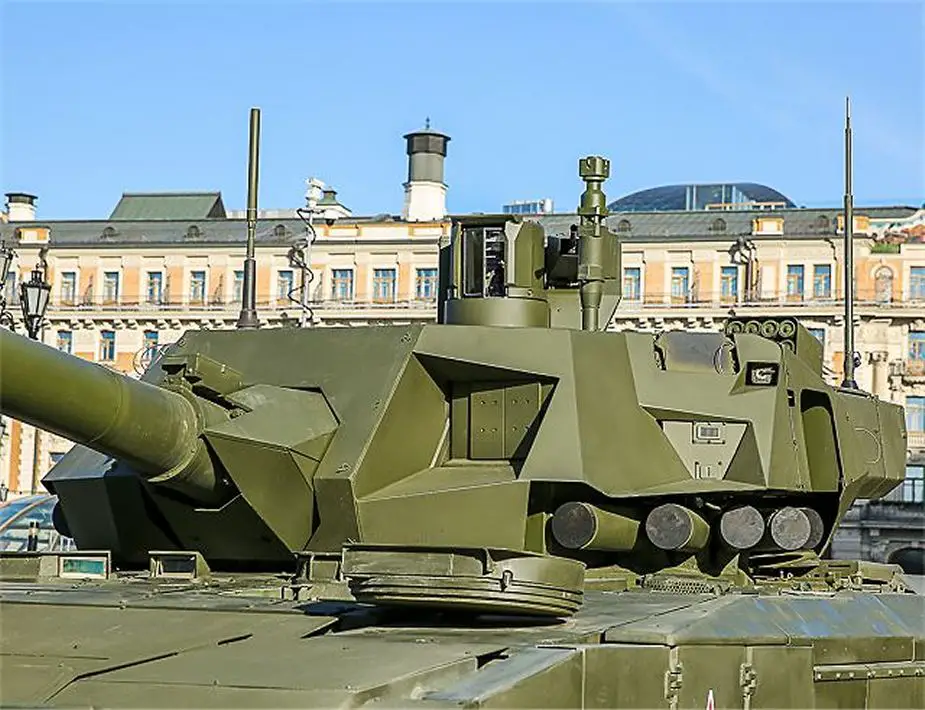 |
| Close view of the turret T-14 Armata main battle tank |
Mobility
Russian Armata T-14 is motorized with a gas-turbine engine developing 1,500 hp coupled to an 8-speed automatic transmission. There is information that the Armata would also have electric transmission to reduce weight of the vehicle and increase the use of add-on armour. Suspension consists on each side of seven dual rubber-tired road wheels. The T-14 Armata can run at a maximum road speed from 80 to 90 km/h with a maximum cruising range of 500 km. All Russian tanks have only six road wheels bur the suspension of the T-14 Armata each side consists of seven road wheels with the idler at the front, drive sprocket at the rear.Accessories
Standard equipment of Armata T-14 includes probably day and night vision equipment, NBC system, front mounted dozer blade, fire detection and suppression system and a battle management system as modern Russian-made main battle tanks. The new Armata also have latest generation of active protection defensive aids suite. A computerized fire-control system is fitted to enable stationary and moving targets to be engaged with a very high first round hit probability. The T-14 Armata is equipped with the Active Protection System (APS) Afghanit which seems similar to the Israeli Trophy able to intercept and destroy incoming missiles and rockets. The system is designed to work against all types of anti-tank missiles and rockets, including handheld weapons such as rocket propelled grenades. The Afghanit APS includes four sets of 12 launch tubes, two at the rear left side of the turret, and one on each rear top side of the turret. At the base of each side of the turret are five large and fixed horizontally arrayed launch tubes covering the 120° frontal arc of the turret. This tubes could launched unguided projectiles with HE warhead to counter incoming anti-tank guided missiles or RPG (Rocket-Propelled Grenade). The Afghanit APS also includes two types of sensors mounted around the T-14's turret. Two large sensors, believed to be electro-optical/infrared (EO/IR)-based laser warning receivers, are angularly mounted on the front of the turret providing 180° coverage, while four smaller sensors (covered but believed to be radars) are mounted around the turret providing 360° coverage. The T-14 Armata is fitted with a computerized fire control automatically calculates the fire control solution based on - lead angle measurement, bend of the gun measured by the muzzle reference system, velocity measurement from a wind sensor mounted on the roof of the turret. A dozer blade mounted under the nose of the tank is used for clearing obstacles and preparing fire positions. A 360° panoramic sight mounted at the front of the remote weapon station of the turret allows commanders and gunner to have all-round surveillance on the battlefield without being disturbed by turret motion. For close view, the T-14 is equipped with wide angle cameras mounted around a vehicle giving full 360° all-round vision on displays and situational awareness.
Specifications
Armament Armor
One 125mm gun, one 57mm automatic grenade launcher, one 12.7 mm machine gun Protection against small arms and shell splinters. Active protection system and active, passive add-on armour
Country users Weight
Russia 48,000 kg
Designer Country Speed
Russia 80 to 90 km/h maximum road speed
Accessories Range
Infrared night vision, NBC protection system, automatic fire control system, active protection system,fire detection and suppression system, battle management system 500 km
Crew Dimensions
3 Length: 8.7 m; Width: 3.5 m; Height: 3.3 m
Details View
